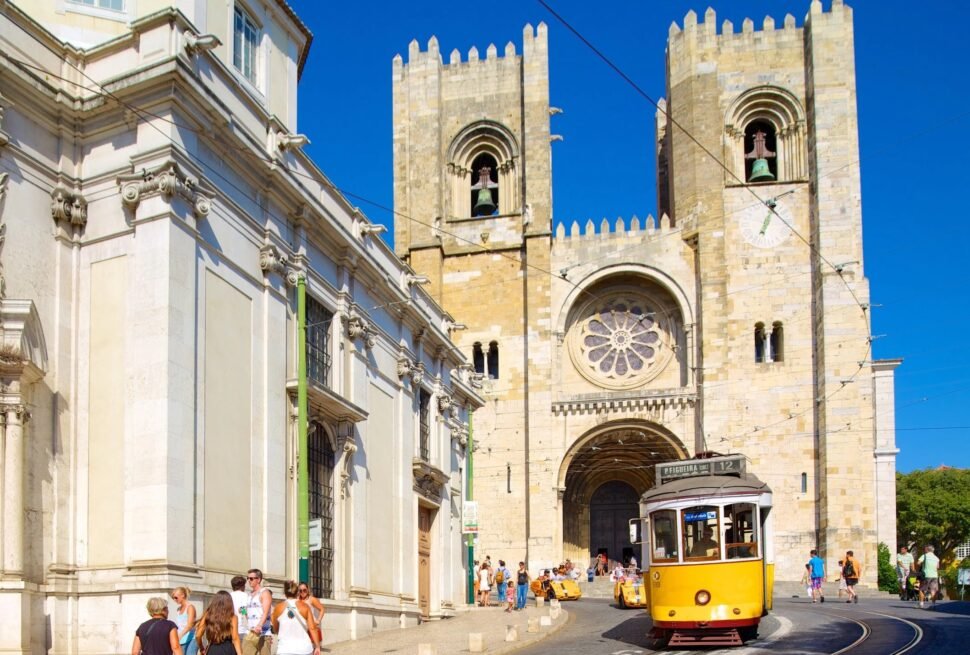
The April 25th Bridge (25 de Abril Bridge) is one of the most iconic structures in Lisbon and a major landmark of Portuguese engineering. Inaugurated on August 6, 1966, it was the longest suspension bridge in Europe at the time. Although many associate it with the Golden Gate Bridge, its history is actually more closely linked to another bridge in San Francisco.
History
The year 1933 marks the beginning of the project for a bridge across the Tagus River. At the time, there was already an idea to develop a model that would encompass the design, construction, and operation of the bridge. A public tender was launched with this objective, but the submitted proposals failed to meet the requirements outlined in the contract, leading to the cancellation of the process. The topic would only be revisited two decades later.
In 1953, a commission was established to study the bridge’s construction, officially initiating the first studies for the crossing. The project was not just about building a bridge; it also involved creating a road link, developing a ring road, and connecting the northern and southern banks. It was only from this phase onward that studies were conducted in greater depth.
During this period, Portuguese engineering played a crucial role, with the involvement of the National Laboratory of Civil Engineering, which was responsible for preparing the tender for the concession and construction of the bridge. The contract specifications were highly demanding: bidders had to secure financing for the project and propose a design for a road-rail bridge.
The Resemblance to the Golden Gate: A Common Misconception

At first glance, the 25 de Abril Bridge is often compared to the Golden Gate Bridge in San Francisco, primarily because both are suspension bridges painted red. However, the similarities end there.
In 1958, the Portuguese government decided to move forward with the bridge project. After years of studies and design attempts, the contract was awarded to the United States Steel International consortium, which was responsible for securing financing and presenting a technical solution that met the needs of a road-rail bridge.
The design of the 25 de Abril Bridge was developed by the engineering firm Steinman, Boynton, Gronquist & London, which was also involved in the Oakland Bay Bridge. This company, with extensive experience in suspension bridges, played a key role in the execution of the project. While initially based on a design by Steinman, significant modifications were made by Portuguese engineers to adapt the structure to local conditions.

Aside from color—since the 25 de Abril Bridge is red while the Oakland Bay Bridge is gray—the two bridges share similarities in pillar design and in their dual-purpose functionality, as both have two levels for different modes of transport.
An Icon of Portuguese Engineering
With a main span of over 1,000 meters (3,280 feet) and highly resistant pillars, the 25 de Abril Bridge symbolizes the modernization and development of Lisbon. At its peak, the construction involved 3,000 workers simultaneously, tackling various technical challenges that required innovation and creativity to ensure the structure’s stability and safety.
The project was exemplary in many aspects, particularly in its organization. An initial work plan set a deadline of 51 months for completion. However, the bridge was finished in approximately 48 months—less than four years.
Building a suspension bridge of this magnitude presented several challenges, including the installation of the pillars and deep foundations, which reached 84 meters (276 feet) into the bedrock. The 25 de Abril Bridge also incorporated innovations such as a continuous stiffening truss and adjustments to accommodate significant thermal expansion, with longitudinal deformations of up to 1.70 meters (5.6 feet).
One of the bridge’s defining features is its dual-deck structure, supporting both road and rail traffic. The bridge was originally designed to accommodate both modes of transport, but railway service was only implemented in 1999—33 years after the bridge was completed. Additionally, the structure was built to withstand winds of up to 200 km/h (124 mph) and seismic activity, which is crucial in a region subject to temperature fluctuations and earthquakes.
The Name Change
The bridge was initially inaugurated as Ponte Salazar, named after António de Oliveira Salazar, Portugal’s dictator at the time, as a way to associate the project with his authoritarian regime.
However, Portugal’s political landscape changed dramatically on April 25, 1974, with the Carnation Revolution, which overthrew the Estado Novo dictatorship and ushered in a democratic government.
A few months after the revolution, the bridge was officially renamed Ponte 25 de Abril, honoring the historic date of the revolution that marked the end of the dictatorship and the beginning of a new era for Portugal. This name change symbolized a break from the past and a commitment to the country’s democratic future.
The Legacy of the April 25th Bridge
The 25 de Abril Bridge is far more than just a transport infrastructure—it is a symbol of connection between the two banks of the Tagus River and a testament to the economic and social development of the Lisbon area. Its construction revolutionized regional mobility, linking Lisbon to Almada and beyond.




